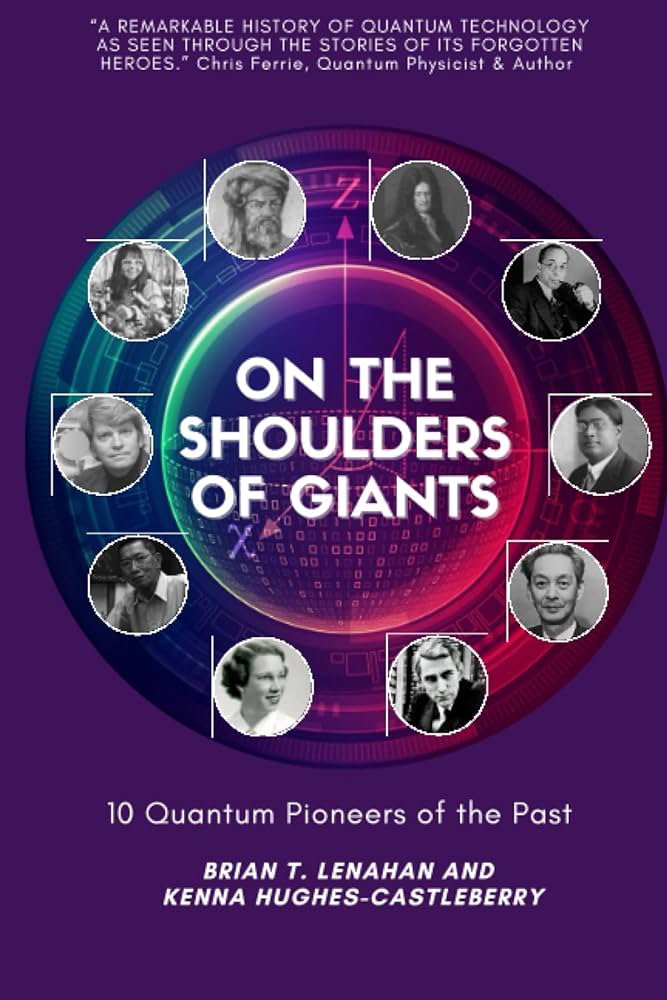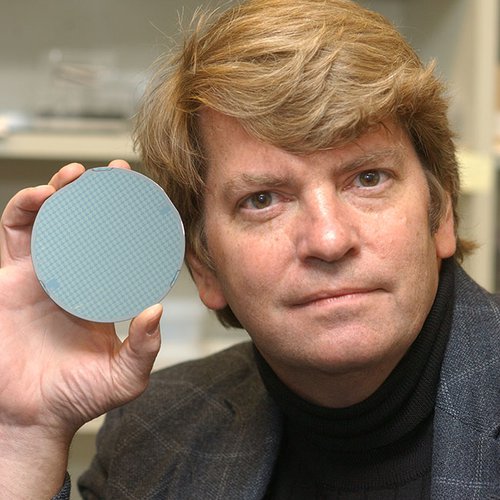
by Laura Wallis
Ten scientists who made their mark on the world of quantum physics—ranging from as long ago as 800 CE all the way to today—were profiled in a book published this spring, On the Shoulders of Giants: 10 Quantum Pioneers of the Past by Brian Lenahan and Kenna Hughes-Castleberry (Aquitaine Innovation Advisors, April 14, 2023). The book was written to shine a light beyond the household names in physics like Albert Einstein and Richard Feynman to those less familiar figures who have been essential to our modern applications of quantum mechanics in physics and technology. Among them was noted engineer, physicist and nanotechnology innovator Mark Reed.
Reed grew up in Syracuse, attending Christian Brothers Academy, and later earned his B.A., M.S., and Ph.D. in physics at Syracuse University. He is fondly remembered by colleagues from his Ph.D. years as always collegial, enthusiastic and a strong supporter of more junior students and scientists. But it was in the years immediately following that his career took off, after he was tapped in 1983 for a position as a researcher at Texas Instruments, notes Eric Schiff, professor of physics in the College of Arts and Sciences. “They gave him a lot of freedom. He had the facilities, resources, and encouragement—and in 1988 he made the first successful quantum dot devices using the tools of the semiconductor industry. Even the name quantum dot was Reed’s coinage,” Schiff explains. “When you start shrinking structures within a semiconductor device to that size…making them small not only vertically but also horizontally…you get extraordinary new options. That success, and pioneering work that followed at Texas Instruments, brought him almost instant stardom in his field.”
Quantum dots are now incorporated in devices for biomedical, telecommunication, and other uses. The QLED (quantum dot light-emitting diode) television that you can buy today is among them.

In 1990, Reed began a more than 30-year career at Yale University, where he would become Harold Hodgkinson Chair of Engineering and Applied Science, and Associate Director of the Yale Institute for Nanoscience and Quantum Engineering. There he was known for his intellectual leadership, exceptional dedication to the students he mentored, and his adventurous tendency to push boundaries for the sake of innovation—a quality that kept him in the limelight. “He maintained that his whole career,” Schiff says. “He had a nose for the new and kept doing excellent things.”
Lenahan and Hughes-Castleberry, in remarking on his significance in the introduction of their book, noted: “Efforts toward securing the exchange of encryption keys through QKD (Quantum Key Distribution) and advancing quantum teleportation — transferring information over long distances without physically moving data — trace in significant ways to Mark Reed and his Yale team.”
Reed’s work was recognized with numerous honors over the years, including Fortune Magazine’s "Most Promising Young Scientist" in 1990; the Kilby Young Innovator Award in 1994; the Fujitsu ISCS Quantum Device Award in 2001; and the IEEE Pioneer Award in Nanotechnology in 2007, to name just a few. He also received the Distinguished Alumni Award from Syracuse University’s College of Arts and Science in 2000. This one may have been a particular point of pride. “He maintained a real loyalty to Syracuse all along,” Schiff recalls. “Sentimentally, he was 100 percent a Syracuse guy.”
Reed passed away in May 2021, at 66 years of age.
